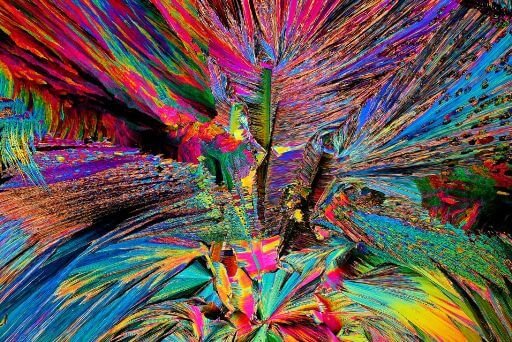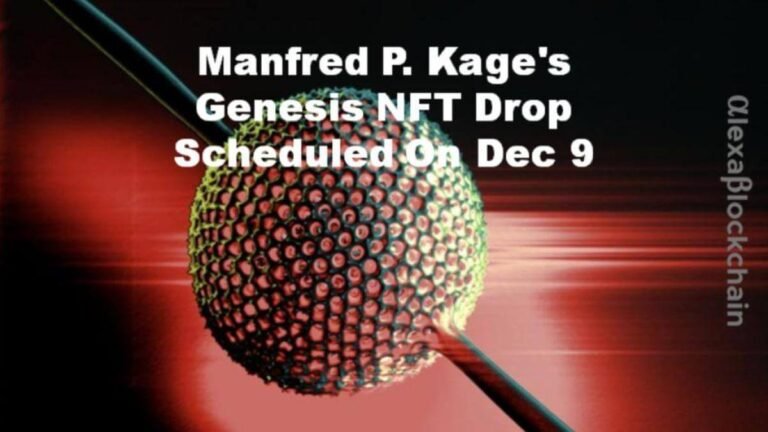“Science Art is the insatiable longing of white light, refracted by terran incarnations, shimmering in all colours.” —Prof. Manfred P. Kage
United States, December 7, 2022 / AlexaBlockchain/ – Radiolaria (radiolarians) are microscopic unicellular organisms that occur exclusively in the sea and form aesthetically beautiful skeletons of silica. About 50 of these skeletons fit on a pencil dot.
Kage has always made it his artistic and challenging task to visually uncover the aesthetics of the tiniest micro-worlds and to make them tangible to the viewers of his works, to make the invisible and the hidden visible and to merge the micro- with the meso- and macrocosm. Kage illuminates the unknown and the hidden, the exotic ornaments of life and metamorphoses of our world, the inevitable connection of our human existence with nature and the cosmos- embedded in the “all-encompassing rhythm of chaos and
order”.
In 1976 Kage was the first private person in Germany to receive a scanning electron microscope, and in 1977 he developed the first colouring for scanning electron microscopy directly on the instrument with a gammadis discriminator. In 1977, Kage established his multispectral “SEM science art” with this invention and later with spectacular moving SEM images. He was also one of the first science photographers to show moving SEM images.
Among the most important pioneering works and inventions of Prof. Manfred P. Kage was the “Polychromator”, a kind of optical synthesizer for microphotography, invented in 1957, which is still unique worldwide.
Dimensionssprung is part of Manfred P. Kages’s “Microverse of Crystals” series, which are crystal-optical pictorial works created with the help of his polychromator.
Kage had always made it his artistic and challenging task to visually uncover the aesthetics of the tiniest micro-worlds and to bring them tangibly to the viewers of his works, to make the invisible and the hidden visible and to let the microcosm merge with the meso- and macrocosm.
Kage illuminates the unknown and hidden, the exotic ornaments of life and metamorphoses of our world, the inevitable connection of our human existence with nature and the cosmos- embedded in the “all-encompassing rhythm of chaos and order”.

“Just as a wonderful melody can be heard through different tones, the infinite shapes of crystals as galactic visions allow us to imagine the harmonic structures of the universe. Starting from the big bang, the formation of cosmic nebulae as birthplaces of the first building blocks of life up to visions of flight rich in color and form over the crystal planet with the most extraordinary concrete microforms of the microcosm.” —Prof. Manfred P. Kage
Among the most important pioneering works and inventions of Prof. Manfred P. Kage was the “Polychromator”, a kind of optical synthesizer for micro photography, invented in 1957, which is still unique worldwide. With the help of his optical device, the polychromator, Kage created crystal-optical pictorial artworks as part of his “Microverse of Crystals”
series.
Kage had always made it his artistic and challenging task to visually uncover the aesthetics of the tiniest micro-worlds and to bring them tangibly to the viewers of his works, to make the invisible and the hidden visible and to merge the micro- with the meso- and macrocosm. Kage illuminates the unknown and the hidden, the exotic ornaments of life and metamorphoses of our world, the inevitable connection of our human existence with nature and the cosmos- embedded in the “allencompassing rhythm of chaos and
order”.
Prof. Manfred P. Kage is renowned as one of the most important multimedia pioneers worldwide. His groundbreaking invention of the “Optical Concert” in 1958 and its unique “science art light art visions”, Kage and his family artists’ collective “Lumation Science Art” continue to span the entire range of optical-visual representations today.
As early as 1959, the “Optical Concert” was presented live with effect projectors specially built for this purpose by Manfred P. Kage, similarly to a keyboard in conjunction with music played interactively with it.
Kage was considered one of the first multimedia artists, as he performed on live, monumental and multiple projections within architectural structures, stage landscapes, natural spaces and/or on artworks. Combined with musical sound structures, the audiovisual “Optical Concert” becomes a fantastic kaleidoscope of exotic forms and colours of Kage’s microscopic worlds in a collective experience directly and immersively perceptible to its viewers.
The “Optical Concert” has already been shown at artistic events on all continents – from the Museum of Modern Art in New York and the Olympic Games, to the Biennale, Expo and Ars Electronica at the invitation of Prof. Herbert W. Franke.

ABOUT elementum.art
COLLECT THE TRUE PIONEERS
elementum is one of the first NFT art platforms worldwide that offers you important and historical NFTs. Unlike most NFT marketplaces, elementum makes it easy to buy and collect NFTs and also accepts credit cards, without having to own crypto or use a crypto wallet.
Over the past years, elementum established curated programming with a particular focus on showcasing historically relevant NFTs created by the great visionaries of the modern and contemporary era.
elementum works closely with digital art specialists, curators, historians, institutions, and writers to identify and canonize the important role the artworks we offer play in history. So, hard to find NFTs that are easy to buy.
Learn more about us
at www.elementum.art
For all the latest news and announcements:
Subscribe to our newsletter link here
Twitter: @elementumart
Instagram: @_elementum.art
Telegram group: elementum.art
Source: elementum



